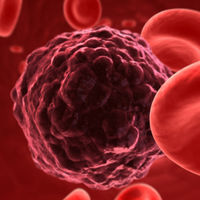Philips and Dako join forces in digital pathology
Royal Philips Electronics and Dako announced that they have signed an agreement to integrate a selection of Dako's image analysis applications into Philips' future digital pathology solutions.
"Anatomic pathology is an essential element of virtually every cancer diagnosis and the demand for it is ever-increasing. Our goal is to develop integrated digital solutions that enhance the operational efficiency and productivity of pathology departments, as well as increasing diagnostic confidence," says Bob van Gemen, General Manager of Philips Digital Pathology. "I am convinced that our partnership with Dako, with its leading market position and expert knowledge in detecting and quantifying specific biomarkers in cancer tissue, will significantly accelerate our clinical applications development program."
Currently, anatomic pathology workflows to examine tissue samples are based on the microscope, through which pathologists examine tissue sections mounted on glass slides and treated with different stains. The staining enhances the contrast between, or reveals the presence of, cellular and molecular components such as cell nuclei or specific proteins. Accurate interpretation of the results is critical to the diagnosis and staging of each individual patient's disease and requires a great deal of skill and experience. Digitizing the images that pathologists normally view through a microscope may enable the introduction of objective and quantitative image analysis tools.
Dr. Clive Taylor, MD, PhD, Professor at University of Southern California, USA, and a renowned expert in pathology, expresses about the collaboration: "Digital pathology has been long in gestation, in comparison to radiology, where images also are the currency of practice, and where image acquisition, transfer, interpretation and storage is almost entirely digital. In part, this lag is because acquisition of histopathology images is dependent upon a 100 year old technique of 'tissue fixation', sectioning and staining. In part, it is because, somewhat surprisingly, fully digitized histopathology images are much larger than CT files, and difficult to manage and analyze. Progress has been slow because there has been no single institution, or company, that embraces both of these areas. It is exciting that collaborations like that between Dako and Philips are now bringing diverse but appropriate expertise to bear on implementing a full digital pathology program."
A fast pathology slide scanner and an associated image management system form the basis of Philips' proposed integrated solutions for digitizing pathology workflows. The Philips-Dako collaboration will initially focus on leveraging Dako's image analysis software for tissue-based breast cancer diagnosis using its reagents for staining HER2, Estrogen Receptor (ER), Progesterone Receptor (PR), p53 and Ki-67 proteins. The detection and quantification of these proteins in biopsy tissue are highly relevant for the classification of breast cancers and the selection of appropriate therapy. Philips and Dako will also explore the possibility of extending the collaboration to include image analysis software for immunohistology-based prostate and colon cancer diagnostics.
Topics
Organizations
Other news from the department business & finance
These products might interest you

Limsophy by AAC Infotray
Optimise your laboratory processes with Limsophy LIMS
Seamless integration and process optimisation in laboratory data management

ERP-Software GUS-OS Suite by GUS
Holistic ERP solution for companies in the process industry
Integrate all departments for seamless collaboration

Get the life science industry in your inbox
By submitting this form you agree that LUMITOS AG will send you the newsletter(s) selected above by email. Your data will not be passed on to third parties. Your data will be stored and processed in accordance with our data protection regulations. LUMITOS may contact you by email for the purpose of advertising or market and opinion surveys. You can revoke your consent at any time without giving reasons to LUMITOS AG, Ernst-Augustin-Str. 2, 12489 Berlin, Germany or by e-mail at revoke@lumitos.com with effect for the future. In addition, each email contains a link to unsubscribe from the corresponding newsletter.





















































